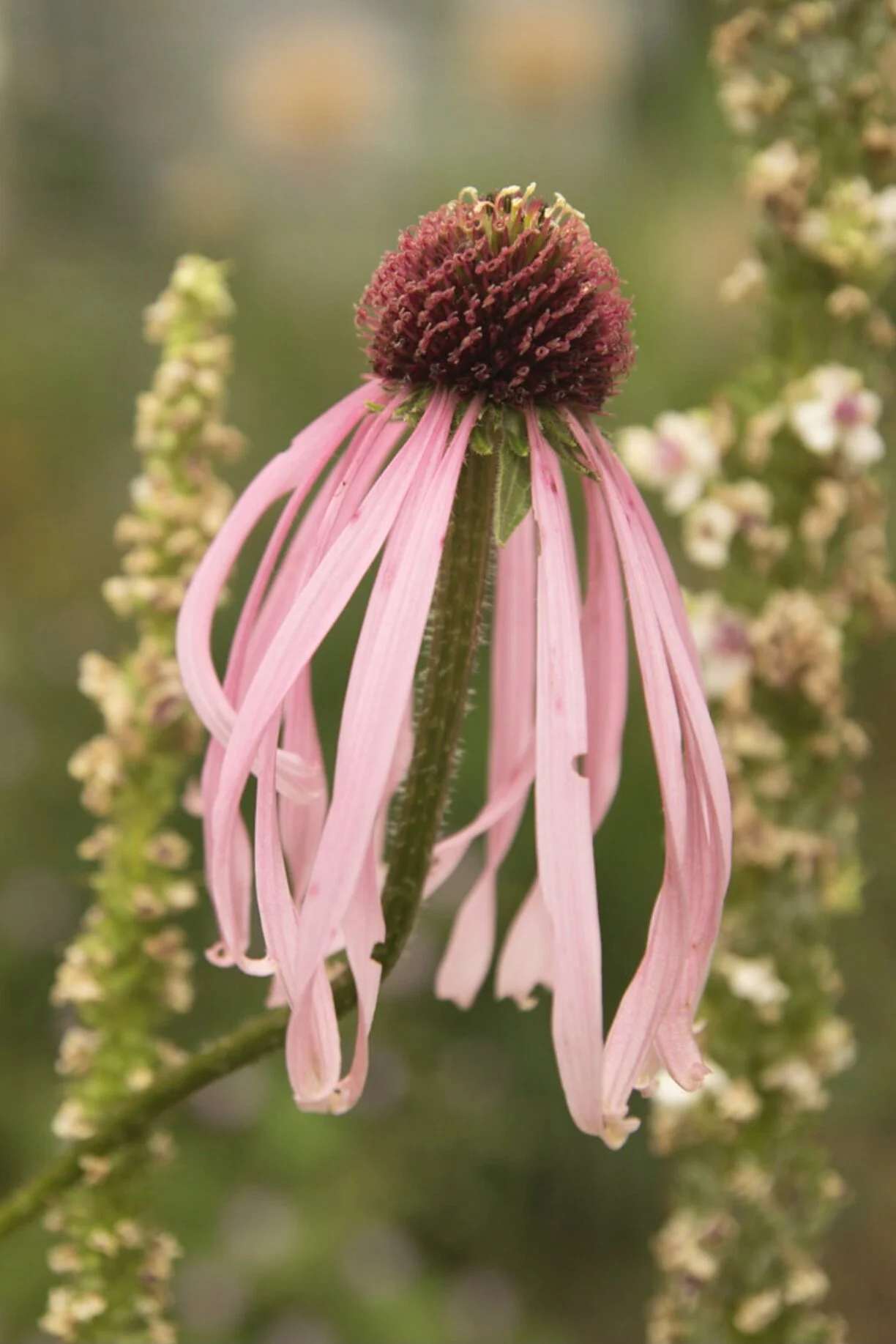Echinacea pallida
Echinacea pallida
ECHINACEA PALLIDA SEEDS
Echinacea pallida
Pale Purple Coneflower. In contemporary herbalism, this pretty species from the American Midwest lives in the shadow of E. purpurea, but the reality is that E. pallida was used far more extensively by Native Americans and has significant medicinal value.
Unlike the more widely used E. purpurea, the roots of E. pallida actually contain echinacoside, a pharmacologically active phenylethanoid glycoside that possesses demonstrable neuroprotective, cardioactive, anti-inflammatory, anti-oxidant, anti-osteoporotic, and anti-viral properties. It is possible that this constituent, at least in part, accounts for the documented preference among Native Americans for this species and E. angustifolia, the latter of which has been extirpated from much of its native habitat thanks to unethical wildcrafting.
Ethnobotanical uses speak to the extreme importance of this plant to tribes of the Great Plains. Decoction of the whole plant was used in the treatment of rheumatism and arthritis, as well as viral illnesses such as measles and mumps. Poultice and decoction of the fresh root was used to soothe and heal burns, and to treat venomous snake and spider bites. Fresh roots were chewed to treat oral and pharyngeal pain. Literature also suggests that the roots were dried and powdered for similar uses, although the superior quality of fresh plant material seems to have been known for centuries.
In the wild, E. pallida is adapted to dry sunny prairies. These seeds are from plants selected and grown in Germany for pharmacological use. They will produce plants accustomed to field production, and they will produce roots with a higher concentration of echinacoside as compared to their wild counterparts.
Sow these seeds indoors 6-8 weeks before the last frost, or directly into the garden in spring. Tuck seeds beneath the surface of moist soil, pressing to keep seed snug. Kept warm, about 65°F, and moist in bright light, seeds will typically germinate within a few weeks. If starting indoors, take care to harden off before transplanting into rich warm soil around the date of the last spring frost. Space plants generously to encourage root development.
Vigorous growth in the first year. In ideal soils, roots may be harvested in the first year, although they are more typically harvested in the second year. Large stands of this species are truly beautiful. Their long downturned petals are striking en masse. Excellent as a cut flower. Very hardy, this species will overwinter as far north as zone 3 if grown in well-drained soils.
As with all Echinacea, individuals with autoimmune disorders should steer clear. Likewise, Echinacea should not be used in the treatment of viral infections that provoke excessive cytokine production, such as SARS Co-V-2/COVID-19. Research continues on the broad scope of pharmacological effects of E. pallida. Herbalists determined to use Echinacea as a prophylactic should consider this species.
Packet contains at least 100 seeds.
Photo by Scott Weber, whose Rhone Street Gardens blog is a wellspring of inspiration.
